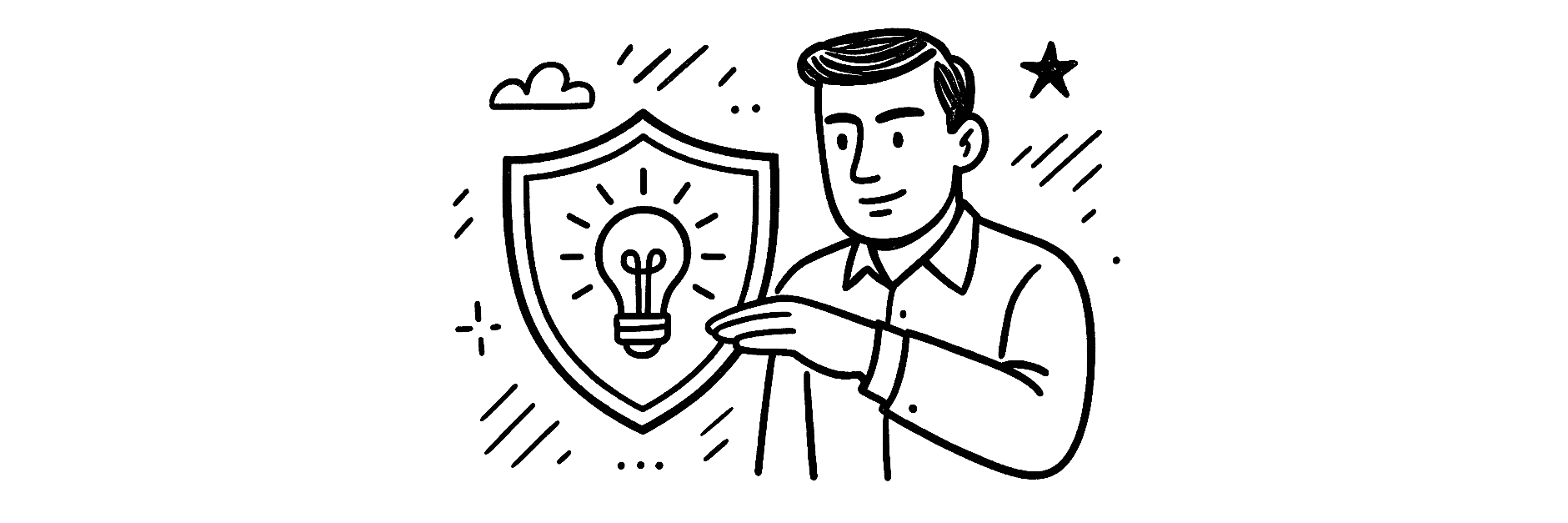How to Protect the IP of Your Side Hustles
I used to think IP protection was for tech companies and big-name startups. You know, the kind that file patents and hire lawyers just to trademark their toilet paper. But after attending a recent session on intellectual property in Singapore, I realised something important. Even your humble side hustle could be sitting on valuable IP. You just don’t call it that.
Let me explain.
“Wait… this is IP?”
During the session, one of the speakers said something that hit home.
“When we talk about intangible assets, it’s beyond IP.”
I sat there thinking about all the stuff I’ve created over the years. The website I built from scratch. The logo I designed in Affinity. The free playbook I gave out as a lead magnet. Even the retirement planning template I painstakingly put together after trial and error.
At no point did I ever think of these as “assets”.
They just felt like… part of the grind.
But here’s the truth. Those things are intangible assets. And unless you’re doing something to protect them, someone else can copy, claim, or commercialise your work and you’ll be left with no recourse.
Let’s break this down.
Every week, I’ll be sharing practical tips and invaluable knowledge to guide you on your path to financial independence.
What You Probably Already Have
If you’re running a side hustle, even if it’s part-time, low-revenue, or still in the “DM me to order” stage, you likely already have:
- A brand name
- A logo or distinctive visual identity
- Written content like blogs, guides, templates, or eBooks
- Courses or workshop slides
- A list of clients or prospects
- Internal processes or frameworks you’ve developed over time
- Social media posts and videos that express your ideas in your voice
All of these are forms of intellectual property. And some like that unique process flow or that video editing technique you taught yourself, could qualify as trade secrets.
The problem is, most side hustlers never think to protect them.
Copyright: You Own More Than You Think
Here’s the good news. In Singapore, copyright arises automatically when you create original work in tangible form. So if you’ve written an article, recorded a podcast, or posted a video, you already hold the copyright.
No need to register. No forms. No fees.
But here’s the catch: you need to be able to prove you created it.
So if someone rips off your blog post and claims it as theirs, what will you show to prove it was yours first? That’s where documentation comes in with version history, draft files, timestamps, even metadata embedded in your documents. These things matter.
Trademarks Are Not Just for Big Brands
If your side hustle has a name, something you’ve put on your website, LinkedIn, product labels or business cards, you should start thinking about trademark protection.
A trademark is more than a name. It’s your badge of origin. It’s what makes people recognise and trust your product or service.
Unlike copyright, trademarks require registration. And here’s the kicker. In some countries, the system works on a first-to-register basis.
So if you’ve been using the name “Luxe Blooms” for example, for your flower arrangement side gig for the past three years, and someone else registers it tomorrow, they could stop you from using it. Even if you came up with it first.
That’s not fair, but it’s how the system works.
If you ever plan to scale, especially regionally (Malaysia, Indonesia, Thailand), you’ll want to file ahead of time, possibly even 3 to 5 years before entering those markets. IP is territorial, which means your Singapore trademark doesn’t protect you elsewhere.
Keeping Trade Secrets Confidential
Let’s say you’ve developed a really unique way of coaching your clients. Or you’ve got a spreadsheet that analyses something no one else is talking about. Or you’re using a clever hack to run your social media marketing.
You don’t want to patent it. You can’t copyright a process. But it’s still something that gives you a competitive edge.
That’s what we call a trade secret.
You don’t need to register it. You just need to keep it confidential, which means no freely shared Google Docs, no onboarding with zero Non Disclosure Agreements (NDA), and definitely no oversharing in Telegram groups.
If you’re working with freelancers or collaborators, have them sign simple NDAs. Create access controls. Label key files as “confidential”. These might sound formal, but if someone steals your ideas and makes money off them, you’ll wish you had done the basics.
What About AI-Generated Stuff?
If you’re using ChatGPT, Midjourney, or any AI tools to generate content for your side hustle, here’s where it gets tricky.
You might assume that because you “created” the prompt, you own the output. But not all AI-generated content qualifies for copyright protection, especially if it’s substantially similar to existing work or draws from copyrighted training data.
Plus, some companies might come after you for commercial use, even if it was unintentional. So always read the terms of use, especially if you’re publishing or monetising AI-generated content.
What You Can Do This Week
You don’t need to lawyer up. But you do need to start thinking like someone who owns assets, not just someone hustling on the side.
Here’s what you can do:
- List down the things you’ve created that are original, branded, or valuable
- Document your content by versioning your files, save drafts, and back them up
- Use NDAs with freelancers, partners, or collaborators
- Start your trademark application if you have a strong brand name or logo
- Audit your side hustle through the Intangibles Disclosure Framework: Identification, Strategy, Measurement, Management
If that sounds overwhelming, don’t worry. You don’t have to do everything at once. But you do need to get started.
Because the last thing you want is to see someone else monetising your work, while you’re still figuring out how to protect it.


This is good information! Thank you!